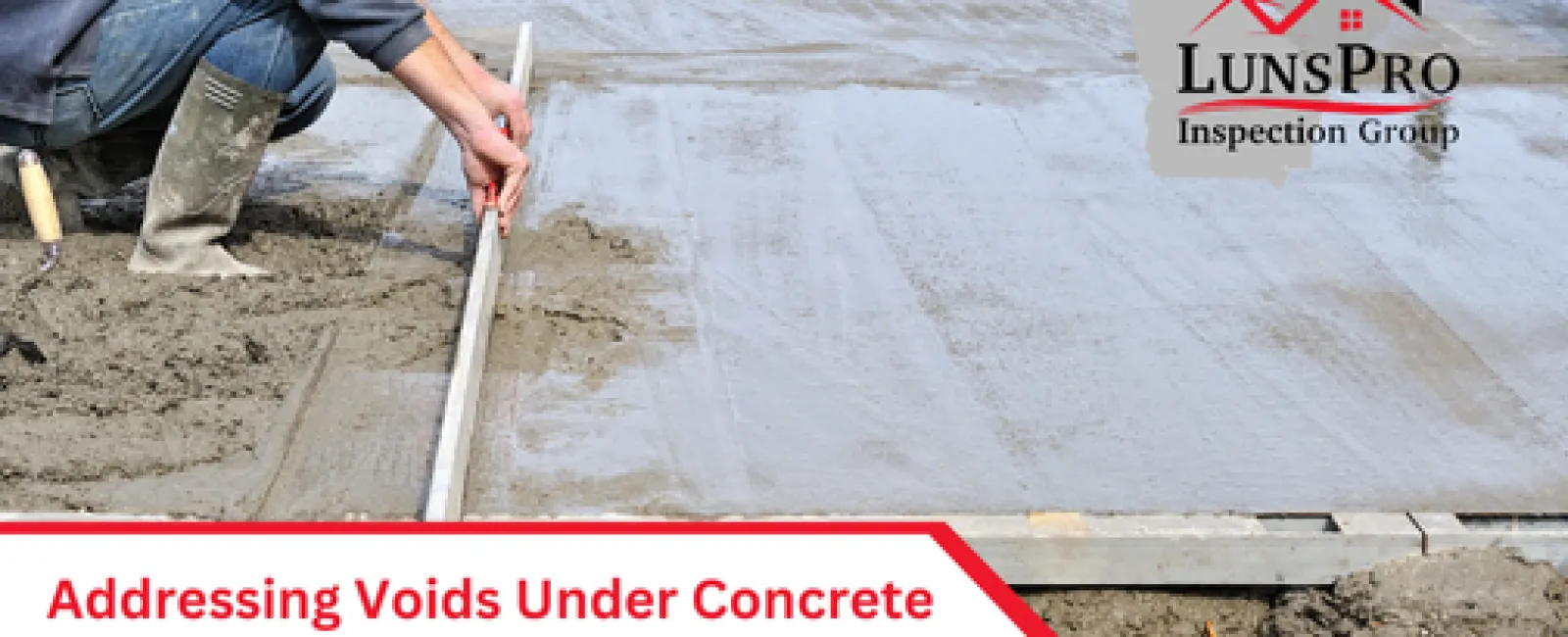Concrete is a durable and versatile building material commonly used in driveways, sidewalks, patios, and foundations. However, it is not impervious to issues that can arise over time. One common problem that homeowners may encounter is the formation of voids beneath concrete slabs. These voids can lead to significant damage if left unaddressed. In this article, we'll explore the causes, consequences, and solutions for voids under concrete, ensuring your property remains safe and stable.
Understanding Voids Under Concrete
Voids under concrete slabs occur when there is a loss of supporting soil beneath the concrete. This can happen for various reasons, such as soil erosion, poor compaction during construction, or water drainage issues. When the soil supporting the concrete shifts or washes away, it creates empty spaces or voids beneath the slab.
Causes of Voids Under Concrete
Soil Erosion: One of the most common causes of voids is soil erosion. This can occur due to water runoff from rain, irrigation, or drainage systems that are not properly managed. Over time, water can wash away the soil beneath the concrete, creating voids.
Improper Drainage: Poorly designed or maintained drainage systems can contribute to soil erosion. Downspouts that direct water towards the concrete rather than away from it can accelerate erosion and lead to void formation.
Soil Compaction Issues: During the initial construction phase, if the soil beneath the concrete is not adequately compacted, it can settle over time, leading to the formation of voids.
Organic Material Decomposition: The presence of organic materials like tree roots or debris beneath the concrete can decompose over time, leaving voids in their place.
Consequences of Voids Under Concrete
Ignoring voids under concrete can lead to several serious consequences, including:
Cracking and Settling: As the concrete slab loses its support, it can begin to crack and settle unevenly. This not only looks unsightly but can also create tripping hazards.
Structural Damage: In severe cases, voids under concrete can compromise the structural integrity of the slab, leading to more extensive and costly repairs.
Water Infiltration: Voids can create pathways for water to infiltrate beneath the concrete, further exacerbating erosion and potentially leading to water damage in nearby structures.
Reduced Property Value: Visible damage to concrete surfaces can negatively impact the curb appeal and value of your property.
Addressing Voids Under Concrete
To prevent further damage and ensure the longevity of your concrete surfaces, it's crucial to address voids promptly. Here are some steps you can take:
Inspect and Identify: Regularly inspect your concrete surfaces for signs of cracking, settling, or void formation. If you notice any issues, it's important to identify the cause and extent of the problem.
Improve Drainage: Ensure that your drainage systems, including downspouts and gutters, direct water away from concrete surfaces. Proper drainage helps prevent soil erosion and reduces the risk of void formation.
Fill Voids: Filling voids beneath concrete is essential to restore stability. One common method is mudjacking or slabjacking, where a mixture of cement, sand, and water is pumped under the slab to fill the voids and lift the concrete back into place.
Polyurethane Foam Injection: Another effective method for filling voids is polyurethane foam injection. This involves injecting expanding foam into the voids, which hardens and provides strong support to the concrete slab.
Professional Inspection and Repair: For larger or more complex voids, it's best to consult a professional inspection and repair service. Companies like LunsPro Home Inspections can provide expert assessments and recommend appropriate solutions.
Voids under concrete can lead to significant damage if not addressed promptly. By understanding the causes, recognizing the signs, and taking proactive measures, homeowners can prevent costly repairs and maintain the integrity of their concrete surfaces. Regular inspections and proper maintenance are key to ensuring your property remains safe and stable. If you suspect voids under your concrete or need professional assistance, don't hesitate to contact LunsPro Home Inspections. Our experienced team is here to help you with comprehensive home inspections and effective solutions to protect your investment.

